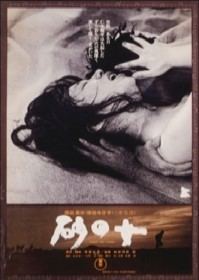7.8 /10 1 Votes7.8
Music by Toru Takemitsu Initial release 15 February 1964 | 3.9/5 Goodreads Originally published 1964 Story by Kōbō Abe | |||||||||||||||||||||||||||||||||
 | ||||||||||||||||||||||||||||||||||
Produced by Kiichi IchikawaTadashi Ono Based on The Woman in the Dunesby Kōbō Abe Starring Eiji OkadaKyōko Kishida Cast Similar The Face of Another, Pitfall, Mother, She and He, When a Woman Ascends t | ||||||||||||||||||||||||||||||||||
Woman in the Dunes or Woman of the Dunes (砂の女, Suna no Onna, "Sand woman") is a 1964 Japanese New Wave film directed by Hiroshi Teshigahara and starring Eiji Okada and Kyōko Kishida. It received positive critical reviews and was nominated for two Academy Awards. The screenplay for the film was adapted by Kōbō Abe from his 1962 novel.
Contents
Plot
A schoolteacher, Niki Junpei (Eiji Okada), goes on an expedition to collect insects that inhabit sand dunes. When he misses the last bus home, the villagers suggest that he stay the night. They guide him down a rope ladder to a house in a sand quarry, to stay with a young widow (Kyōko Kishida), a meek and simple woman whose husband and daughter were killed in a sandstorm and who now lives alone. She is employed by the villagers to dig sand for sale to be used in concrete and to save the house from burial in the advancing sand.
When Junpei tries to leave the next morning, he finds the ladder removed and cannot climb the sand since it keeps collapsing. The villagers expect him to become the woman's husband and to assist her in digging sand. Junpei becomes the widow's lover, but he still yearns to leave. One morning, using an improvised grappling hook, he escapes from the sand dune and runs away, with the villagers soon giving chase. Junpei is unfamiliar with the geography of the area and becomes trapped in quicksand. The villagers free him and return him to the house.
Eventually, Junpei resigns himself to his situation. He requests time to watch the nearby sea, and the villagers offer to grant it if he makes love to the woman while they watch, but she fends him off. Through his persistent effort to trap a crow as a messenger, he discovers a way to draw water from the damp sand at night and becomes absorbed in the task of perfecting the technique. When it is discovered that the woman is pregnant, the villagers take her to a doctor and forget to remove the rope ladder before they leave. Junpei has a chance to escape, but he chooses to stay.
Cast
Release
The roadshow version of Woman in the Dunes was released in Japan on February 15, 1964 where it was distributed by Toho. The general release for Woman in the Dunes in Japan was April 18, 1964; the film was cut to 127 minutes.
The film was released in the United States by Pathe Contemporary Films with English subtitles on September 17, 1964. The film ran at 127 minutes.
The Criterion Collection released a DVD box set collecting Woman in the Dunes in its original length along with Teshigahara's Pitfall and The Face of Another in 2007. This release is now out of print. In August 2016, Criterion released the film as a standalone Blu-ray with a brand new high definition transfer.
Critical reception
The film has a rating of 100% on review aggregator site Rotten Tomatoes, based on 27 critical reviews with an average rating of 8.7 out of 10. It was one of the ten best films chosen by Russian filmmaker Andrei Tarkovsky.
Roger Ebert inducted Woman in the Dunes into his Great Movies list in 1998. Viewing the work as a retelling of the Sisyphus myth, he wrote, "There has never been sand photography like this (no, not even in "Lawrence of Arabia"), and by anchoring the story so firmly in this tangible physical reality, the cinematographer, Hiroshi Segawa, helps the director pull off the difficult feat of telling a parable as if it is really happening." Strictly Film School describes it as "a spare and haunting allegory for human existence". According to Max Tessier, the main theme of the film is the desire to escape from society.
The film's composer, Toru Takemitsu, was praised. Nathaniel Thompson wrote, "[Takemitsu's] often jarring, experimental music here is almost a character unto itself, insinuating itself into the fabric of the celluloid as imperceptibly as the sand." Ebert also stated that the score "doesn't underline the action but mocks it, with high, plaintive notes, harsh, like a metallic wind."
Awards
The film won the Special Jury Prize at the 1964 Cannes Film Festival and, somewhat unusually for an avant-garde film, was nominated for the Best Foreign Language Film Oscar in the same year (losing to Yesterday, Today and Tomorrow). In 1965, Teshigahara was nominated for the Best Director Oscar (losing to Robert Wise for The Sound of Music). In 1967, the film won the Grand Prix of the Belgian Film Critics Association.
